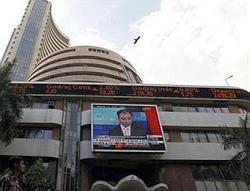The majority of banking stocks are still inexpensive and undervalued compared to the universe. Budapest to Vienna is two-and-a-half hours by road. Just across the border we were wondering why the Austrians were not so prompt like Hungarians to clear up the snow from the highway.
Budapest to Vienna is two-and-a-half hours by road. Just across the border we were wondering why the Austrians were not so prompt like Hungarians to clear up the snow from the highway.
After all, nature knew no borders. It was on our way that we realised we had travelled ahead of the snow shower and our pattern recognition was incorrect.
Human mind can’t always see the big picture and though there are patterns everywhere, the patterns that accompany the bigger picture are more significant.
The 3Ms were also talking about another behavioural pattern linked with historical highs. So many markets were at historical highs.
Dow 30 had crossed the 2007 highs. But there was simply no excitement. Was the market anticipating snow across the border (historical resistance)?
Society does not know how to measure sentiment, but the market mood is definitely low. There is a lot of circumspection about terminal highs, and beginning of a new market misery.
Were you expecting a different sentiment? Is it the story of once bitten, twice shy? When we get hurt once are we not so careful the next time around?
The idea of protection is so inherent in the human mind that a 10- or five-year breakout of resistance may not evoke fireworks and excitement but fear. The excitement only begins, when it’s too late.
Last week, we talked about global indices outliers and how late or not-so-late does not really matter, what matters is if you bought it cheap or expensive.
An extreme behaviour is an outlier, strange this behaviour
Here is where the big picture comes. If a ‘buy’ entry is psychologically obvious, it’s probably incorrect.
This is why investing needs emotionless systems. Because emotions will always interfere with decision making, making decisions intuitive and wrong. The only way you can beat the market is with counter-intuition.
The moment you start questioning the behaviour, you start seeing that while the blue popular chips put you on alert, the sectors on the flanks are already breaking out. The new leaders are already suggesting confidence rather than caution.
We have come a long way to all positive signals on the Indian banking sector from our first banking accumulate call on September 12, 2012. Of the 39 components, 11 banking stocks have running buy signals (positive price and Jiseki trend) for near 100 days with an average return of 20 per cent.
Now, one may ask why is it still a buy? A few reasons, just eight of the 39 banking sector components are still above 50-percentile performance ranking. This means that the majority of banking components are still inexpensive and undervalued compared to the universe.
To create a short list of buy entries from the current list, we ran a small query on the banking list.
Which are the positive banking stocks that are positive Jiseki, positive price trend and less than 5 per cent from the previous relevant highs?
SBI topped our best-pick list while the trend for majority of the other 39 banking components remains positive.
The author is CMT and founder, Orpheus CAPITALS, a global alternative research firm











